Circadian Rhythm of Serum Testosterone and Its Relation to Sleep
Robert Gorter, MD, PhD, is emeritus professor of the University of California San Francisco (UCSF)
Dr. Robert Gorter: “Nocturnal penile tumescence (abbreviated as NPT), also known colloquially as morning wood, morning erections, or morning glory, is a spontaneous erection of the penis during sleep or when waking up. All men without physiological erectile dysfunction experience nocturnal penile tumescence, usually three to five times during the night, typically during REM sleep. NPTs are believed to contribute to penile health and are a sign of a more or less intact circadian rhythm and an intact own (endogenous) testosterone production. During aging, it slowly declines; probably due to decreasing own testosterone production.”
Dr. Gorter could document that sildenafil (Viagra®) can improve nocturnal erectile quality and frequency not only in patients with erectile dysfunction as previously published but also in potent males at any age.
NPT actually starts in utero, or in the womb, and continues throughout life. Women also get clitoral erections and vaginal engorgement during sleep, and various nonhuman mammals also get NPT.

This chapter discusses the relationship between the circadian rhythm and the production of various hormones that are important for sportsmen who exercise extreme sports like weight lifting, wrestling, boxing and body building; and how important the knowledge is for optimizing one’s extreme performances in a very safe way.
Circadian Rhythm of Serum Testosterone and Its Relation to Sleep: Comparison with the Variation in Serum Luteinizing Hormone, Prolactin, Cortisol and Libido in the Average Adult Men: How to get from left to right?
by Robert Gorter, MD, PhD, etc. al.

The following study is very clarifying:
Frequent samples of blood were obtained for serum testosterone, LH, PRL, cortisol, and GH determinations in healthy men while awake and during nocturnal and daytime sleep. The results were correlated with polygraphic monitoring of the electroencephalogram, electro-oculogram, and electro-myogram. The mean serum levels of testosterone and PRL during non-rapid eye movement (NREM) sleep and rapid eye movement (REM) sleep differed significantly from those during the waking period. However, the mean levels of these hormones during REM sleep were not statistically different from those during NREM sleep. Through all states of waking and sleep, the mean level of LH remained unchanged.
When the periods of nocturnal sleep were divided into four 3-h periods, namely 2000–2300 h (A), 2300–0200 h (B), 0200–0500 h (C), and 0500–0800 (D), testosterone was significantly increased during period D (P < 0.05). LH levels were similar in all four periods. The PRL level was significantly elevated during periods C (P < 0.01) and D (P < 0.01). When the nocturnal waking state was also divided into the same four time periods, testosterone was significantly elevated in period D (P < 0.05). In contrast, neither an increase in PRL nor any change in LH was seen during the nocturnal waking state. A marked elevation of cortisol was seen in period D (P < 0.01) both during the nocturnal sleeping and the nocturnal waking states.
During acute sleep-wake cycle reversal performed in two subjects, PRL was elevated during sleep in the daytime, but testosterone was not significantly altered. The GH level in these two subjects increased during the deep NREM stages during both nocturnal and daytime sleep.
The present findings suggest that the rise in the serum level of testosterone during the early morning is not directly related to sleep or to any of the sleep stages or to the changes of LH or PRL, but may be derived from an endogenous circadian rhythm similar to that of cortisol.
These data document that testosterone initiates the re-incarnating process from around 3 am on till awakening around 7 am.
Nocturnal penile tumescence (abbreviated as NPT), also known colloquially as morning wood, early morning erections, or morning glory, is a spontaneous erection of the penis during sleep or when waking up. All men without physiological erectile dysfunction experience nocturnal penile tumescence, usually three to five times during the night, typically during REM sleep. NPTs are believed to contribute to penile health and are a sign that the overall circadian rhythms are intact.
The existence and predictability of nocturnal tumescence is used by sexual health practitioners to ascertain whether a given case of erectile dysfunction (E.D.) is psychological or physiological in origin. A patient presenting E.D. is fitted with an elastic device to wear around their penis during sleep; the device detects changes in girth and relays the information to a computer for later analysis. If nocturnal tumescence is detected, then the E.D. is presumed to be due to a psychosomatic illness such as sexual anxiety; if not, then it is presumed to be due to a physiological cause. In fact, a healthy man should expect to get a strong erection three to five times per night.
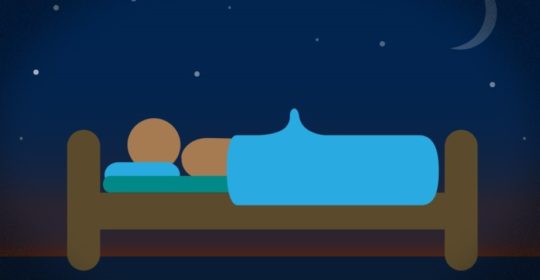
The cause of NPT is not known with absolute certainty but there is a broad consensus among experts. Bancroft (2005) hypothesizes that the noradrenergic neurons of the locus ceruleus are inhibitory to penile erection, and that the cessation of their discharge that occurs during REM sleep may allow testosterone-related excitatory actions to manifest as NPT. The nerves that control a man’s ability to have a reflex erection are located in the sacral nerves (S2-S4) of the spinal cord.
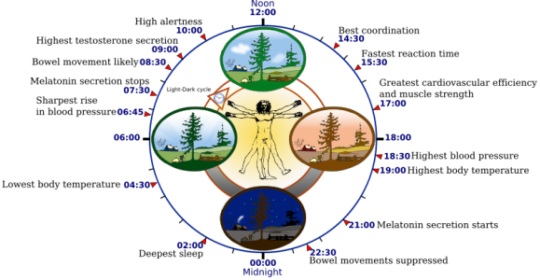
Note that the clock times are relative to one’s lifestyle and environment, most importantly when one sleeps, works and sees daylight. Think of the clock times as averages for a regular individual in the US and the EU who works 9 to 5 and sleeps 12 to 8
The testosterone to cortisol ratio or the T/C ratio is commonly used as a marker of tissue anabolism and tissue repair, and a can be a measure of overtraining (cortisol = “stress hormone”) goes up. As one can extrapolate from the above graphs, the T/C ratio is highest in the afternoon and evening. During this period, exercise causes the smallest increase in cortisol and the largest increase in testosterone. Cortisol elevation also recovers fastest at that time. It is very plausible that the hormonal milieu in the late afternoon is optimal for maximum muscle anabolism. However, the research is still contentious about how transient fluctuations in hormone concentrations relate to muscle growth.
Regardless of whether it is hormone-related or not, muscle hypertrophy signaling is much higher late in the afternoon and early evening than in the morning according to gene expression and cellular activation research.
A health young man and male body builder should have multiple early morning erections as a sign of a surge of own testosterone production as a way to incarnate again.
Another study, over a period of 14 months, sexual activity, both sexual intercourse and masturbation, was recorded every day, in five males (26–32 years), synchronized with lights-on at 0700 ± 1 hour and lights-off at 23.00 ± 1.5 hour to control the melatonin production. Circadian rhythms of plasma testosterone (among other hormonal variables) were documented every month during the same time span (sampling at 4-hour intervals, for 28 hour, on test days). The circadian rhythms for sexual activity and early morning erections were computed on a monthly basis, during the year, show two prominent peaks located in the late evening and early morning (and a minor peak in the early afternoon). There was a clear autumnal peak in plasma testosterone 24-hour mean level which explains the stark increased need for sexual activity (especially for more frequent masturbation).
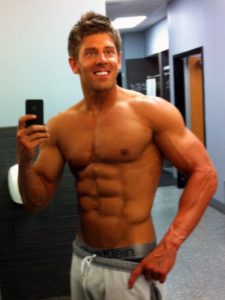
Jeremiah Towery at time of picture: age: 31; height: 190 cm; weight: 110 kg; 8 years of natural body building and weight training
Circadian Core Body Temperature
Much less contentious are the effects of your core body temperature. Core body temperature is the temperature at which our inner organs operate. Enzymatic reactions and one’s immune system are extremely sensitive to minor variations in the core body temperature (usually measured rectally). For the biological systems involved in high intensity physical exercise, the optimal temperature is relatively high. Core body temperature is low at night, rises quickly upon awakening and reaches a maximum in the early evening (see graph below).
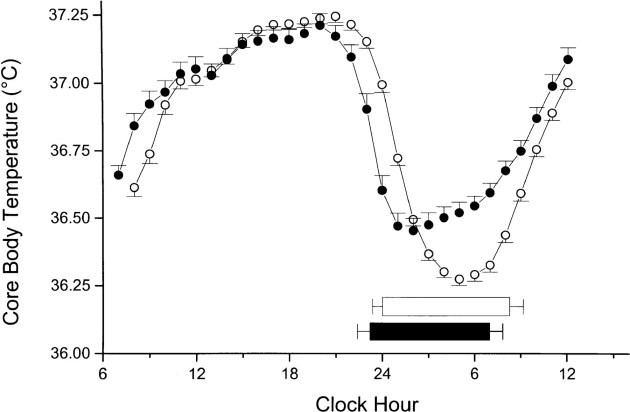
The optimal body temperature for strength training normally occurs in the late afternoon to early evening 15.30 till 20.30. During this time window of four hours, one has an optimal nerve conduction velocity, joint mobility, glucose metabolism and muscular blood flow. This improves tissue stress distribution, so that your muscles can be maximally and equally activated and your connective tissue (tendons) remains healthy.
Cancer patients always have a significantly lower core body temperature and practically no circadian rhythm.
It is no surprise then that most sports records are broken in the early evening. More importantly, a multitude of randomized, controlled, trials support exercising in the late afternoon to early evening. At this time, flexibility, power and muscular strength reach their daily peak. Endurance capacity seems to have a less pronounced circadian rhythm.
Over a period of 14 months, sexual activity, both sexual intercourse and masturbation, was recorded every day, in five males (26–32 years), synchronized with lights-on at 0700 ± 1 hour and lights-off at 23.00 ± 1.5 hour. to control the melatonin production. Circadian rhythms of plasma testosterone (among other hormonal variables) were documented every month during the same time span (sampling at 4-hour intervals, for 28 hour, on test days). The circadian rhythms for sexual activity and early morning erections were computed on a monthly basis, during the year, show two prominent peaks located in the late evening and early morning (and a minor peak in the early afternoon). There was a clear autumnal peak in plasma testosterone 24-hour mean level which explains the stark increased need for sexual activity (especially for more frequent masturbation).
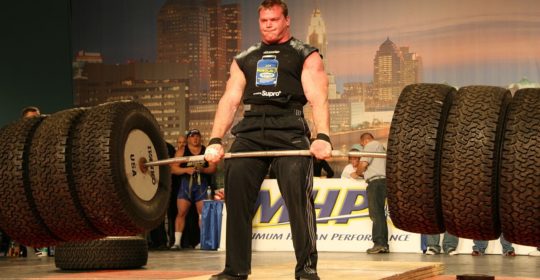
Derek Poundstone pulled 429 kg during the Hummer Tire Deadlift at the 2008 Arnold Strongman Classic
So: what are the pre-requisites and the best times to work out?
- Based on the circadian rhythm of your hormones, gene expression and your core body temperature, the best time to schedule your extreme training sessions is between 15:30 and 20:30. If training sessions last longer than two to three hours, train a bit earlier. This advice is based on the assumption that you generally sleep when it’s dark and are awake when it’s light outside (to have a well-established melatonin production).
- Multiple early-morning erections are a sign of a strong endogenous testosterone production, and a well-established circadian rhythm (which is a sign of good health and a strong condition).
- Deep sleep between (see the chapter on Light Pollution) 10.00 pm and the next morning 7.00 am in absolute darkness will support the circadian rhythm and overall health (especially optimal immune function and regeneration) and there are strong indications that disrupted sleep by light and sound is associated with increase on the incidence of cancer.
Source: AKIHIKO MIYATAKE, et. al. Presented at the 14th International Conference for Chronobiology, Hannover, Germany, and the Sixth International Congress of Endocrinology, Melbourne, Australia, 2015.


 Deutsch
Deutsch Nederlands
Nederlands Turkish
Turkish Russian
Russian Italiano
Italiano Français
Français Português
Português العربية
العربية